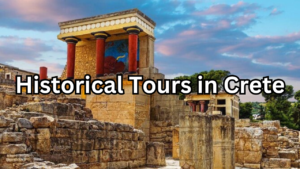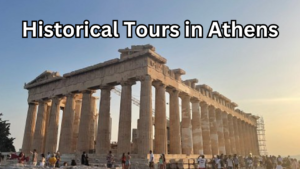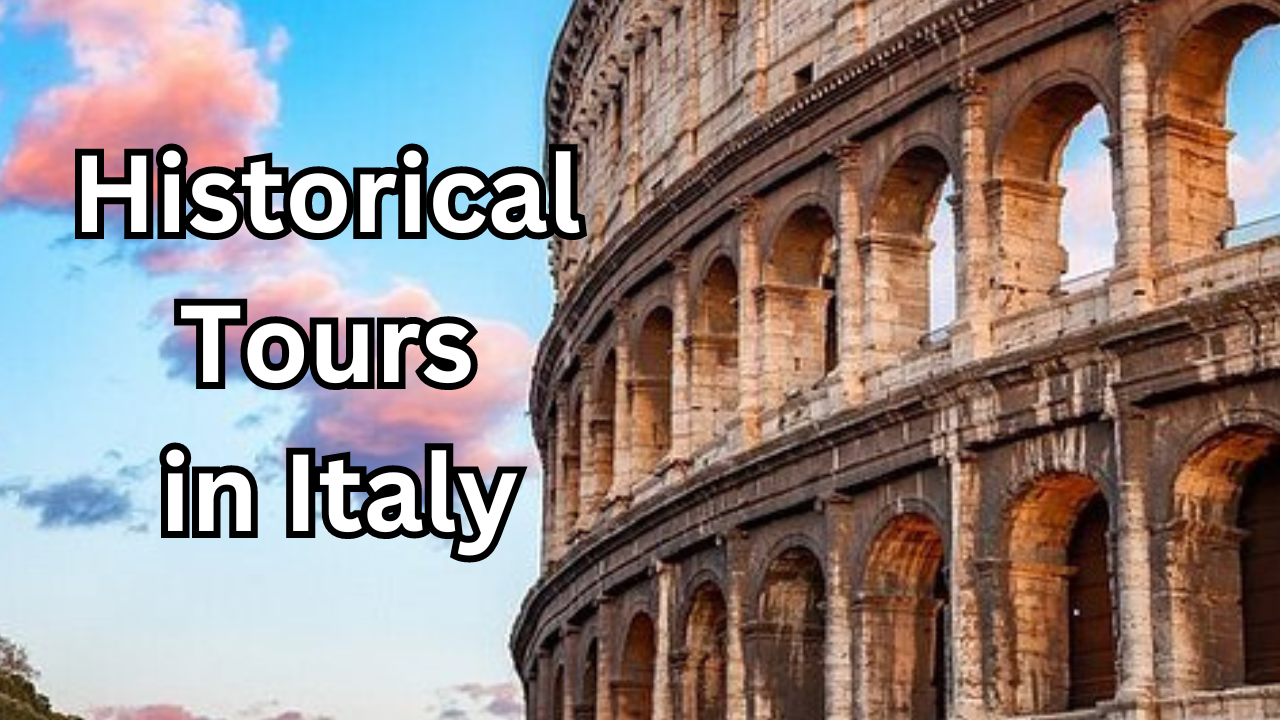
Table of Contents
Introduction
Historical tours in Italy offer an unparalleled journey through time, showcasing the country’s rich and diverse heritage. From the ancient marvels of Rome, including the Colosseum, Roman Forum, and Pantheon, to the Renaissance treasures of Florence with its Uffizi Gallery and Duomo, each destination unveils layers of history and artistic splendor. Venice’s canals and historic sites like St. Mark’s Basilica provide a unique perspective, while Pompeii and Herculaneum offer a glimpse into daily life during Roman times. Assisi’s spiritual aura, Siena’s medieval charm, and the archaeological wonders of Naples add further depth to Italy’s historical tapestry. Vatican City, with its museums and religious landmarks, stands as a testament to centuries of cultural and spiritual significance. Exploring these historical sites is not just a tour but a profound immersion into Italy’s captivating past.
Brief Overview of Italy’s Historical Significance
Italy’s historical significance is profound and far-reaching, shaping the cultural, artistic, and political landscapes of Europe and the world. As the birthplace of the Roman Empire, Italy played a pivotal role in shaping Western civilization. The legacy of ancient Rome is evident in its engineering marvels like the Colosseum and aqueducts, as well as its legal and political systems that laid the foundation for modern governance. Italy’s Renaissance period marked a cultural renaissance, with artists like Leonardo da Vinci, Michelangelo, and Raphael producing timeless masterpieces that continue to inspire awe. The country’s rich history also includes the influential city-states of Venice, Florence, and Genoa during the Middle Ages, contributing to trade, commerce, and the spread of ideas. Italy’s historical significance extends beyond its borders, influencing art, architecture, philosophy, and politics throughout history and continuing to shape our world today.
Importance of Historical tours in understanding Italy’s Heritage
Historical tours play a vital role in deepening our understanding of Italy’s rich heritage. They provide immersive experiences that bring history to life, allowing us to explore ancient ruins, majestic cathedrals, and renowned artworks firsthand. By walking in the footsteps of past civilizations, we gain insights into Italy’s cultural evolution, from the mighty Roman Empire to the flourishing Renaissance era and beyond. These tours offer context to historical events, allowing us to appreciate their significance and impact on modern society. Moreover, they foster a sense of connection with Italy’s heritage, helping us appreciate the artistry, craftsmanship, and ingenuity of past generations. Through historical tours, we not only learn about Italy’s past but also gain a deeper appreciation for its enduring contributions to art, culture, and civilization.
Rome
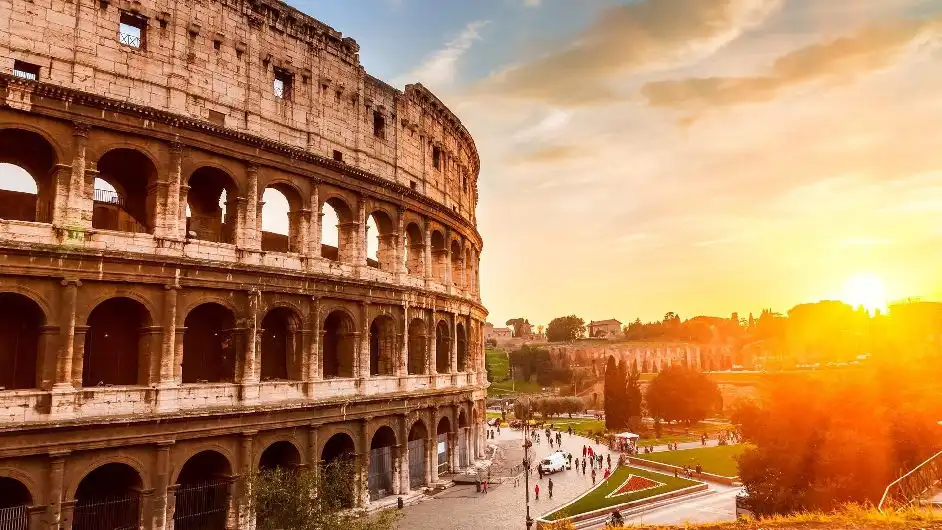
Rome, often dubbed the “Eternal City,” is a captivating blend of ancient wonders and modern vibrancy. As the capital of the Roman Empire, Rome boasts an unparalleled wealth of historical sites that chronicle millennia of human history. The iconic Colosseum stands as a testament to the grandeur of ancient Roman engineering and entertainment, while the nearby Roman Forum and Palatine Hill offer glimpses into the political and social life of antiquity. The Pantheon, with its perfectly preserved dome, showcases the architectural prowess of the Roman era. In contrast, landmarks like the Trevi Fountain and Spanish Steps highlight Rome’s Baroque and Renaissance influences. Exploring Rome is like embarking on a time-traveling adventure, where each cobblestone street and monumental structure whispers tales of emperors, gladiators, artists, and thinkers who shaped this remarkable city.
Colosseum, Roman Forum, and Palatine Hill
The Colosseum, Roman Forum, and Palatine Hill stand as triumphant symbols of Rome’s ancient glory. The Colosseum, a colossal amphitheater, once hosted spectacular gladiatorial contests and events, showcasing the grandeur and entertainment of the Roman Empire. Adjacent to the Colosseum, the Roman Forum served as the bustling heart of ancient Rome, where politics, commerce, and social life converged amidst grand temples and civic buildings. Palatine Hill, overlooking the Forum, was the site of imperial palaces, embodying the power and opulence of Rome’s emperors.
Pantheon, Trevi Fountain, and Spanish Steps
Moving to the Baroque and Renaissance periods, the Pantheon represents a marvel of ancient Roman engineering and religious significance. Its magnificent dome and oculus create a breathtaking interplay of light and space within this ancient temple-turned-church. The Trevi Fountain, a masterpiece of Baroque art, is a mesmerizing spectacle adorned with mythological figures and cascading waters, drawing visitors to toss coins for good luck. Nearby, the Spanish Steps provide a picturesque setting for leisurely strolls and people-watching, surrounded by elegant buildings, shops, and cafes. These landmarks encapsulate Rome’s enduring allure, seamlessly blending ancient marvels with artistic splendor across different epochs.
Read more about Historical Tours in Rome
Florence

Florence, the cradle of the Renaissance, is a city steeped in artistic and cultural splendor. Its historic center is a treasure trove of masterpieces, making it a must-visit for art enthusiasts and history buffs alike. The Uffizi Gallery stands as a veritable shrine to Renaissance art, housing works by iconic masters such as Michelangelo, Leonardo da Vinci, Raphael, and Botticelli. The gallery’s vast collection offers a captivating journey through the evolution of art during this transformative period.
The Florence Cathedral, known as the Duomo, dominates the city’s skyline with its magnificent dome designed by Filippo Brunelleschi. Adjacent to the cathedral is the Galleria dell’Accademia, home to Michelangelo’s iconic sculpture of David, a symbol of artistic perfection and humanism. Walking through Florence’s narrow streets, one encounters architectural gems like the Palazzo Vecchio, Ponte Vecchio bridge, and the Basilica of Santa Croce, where luminaries like Galileo Galilei and Michelangelo are laid to rest.
Beyond its artistic heritage, Florence exudes a vibrant ambiance, with bustling markets, charming piazzas, and delectable Tuscan cuisine. The city’s rich history and cultural legacy continue to inspire visitors, inviting them to immerse themselves in the beauty and creativity that define Florence as a timeless masterpiece of human achievement.
Uffizi Gallery
The Uffizi Gallery in Florence is a treasure trove of Renaissance art, housing an unparalleled collection of masterpieces from some of the greatest artists in history. Visitors to the gallery can admire works by Michelangelo, Leonardo da Vinci, Botticelli, Raphael, and many others, offering a comprehensive insight into the artistic brilliance of the Renaissance period. The Uffizi Gallery not only showcases paintings and sculptures but also provides a window into the cultural and intellectual flourishing of Florence during this era.
Florence Cathedral (Duomo) and Galleria dell’Accademia
The Florence Cathedral, also known as the Duomo, is a stunning example of Renaissance architecture and a focal point of the city’s skyline. Its crowning glory is the iconic dome designed by Filippo Brunelleschi, a marvel of engineering and aesthetic achievement. Nearby, the Galleria dell’Accademia houses Michelangelo’s renowned sculpture of David, a masterpiece that epitomizes the ideals of Renaissance artistry and humanism.
Renaissance architecture and art
Renaissance architecture and art are intertwined in Florence, with landmarks like the Palazzo Vecchio, Ponte Vecchio, and Basilica of Santa Croce showcasing the city’s rich artistic heritage. The harmonious blend of classical elements, perspective, and human anatomy in Renaissance art and architecture reflects a profound appreciation for beauty, knowledge, and the human spirit, making Florence a captivating destination for lovers of art, history, and culture.
Read more About Historical Tours in Florence
Venice
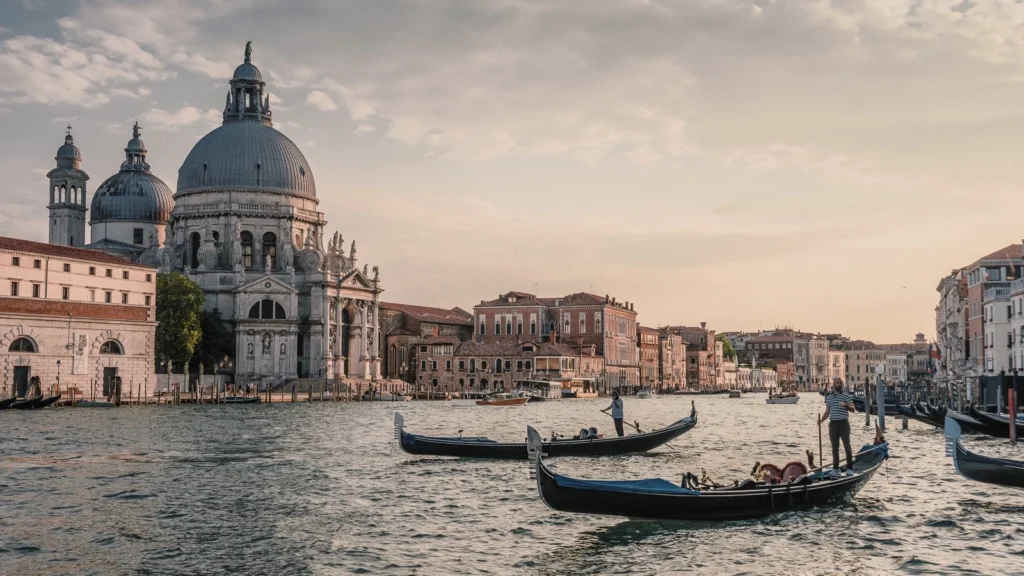
Venice, often called the “Floating City,” is a mesmerizing blend of history, culture, and architectural marvels set amidst a network of picturesque canals. This unique city in northeastern Italy is renowned for its romantic ambiance, artistic heritage, and distinctive Venetian Gothic and Renaissance architecture.
The heart of Venice is the iconic St. Mark’s Square (Piazza San Marco), surrounded by architectural gems like St. Mark’s Basilica, a stunning example of Byzantine architecture adorned with intricate mosaics and ornate domes. Next to the basilica stands the majestic Doge’s Palace (Palazzo Ducale), once the seat of Venetian political power, now a museum showcasing the city’s rich history and artistic treasures.
Exploring Venice’s labyrinthine streets and canals is a delight, with each corner revealing hidden gems such as charming bridges, ancient churches, and quaint squares. A gondola ride along the Grand Canal offers a romantic and scenic perspective of Venice’s historic palaces and buildings, including the elegant Rialto Bridge, a symbol of the city’s grandeur and architectural ingenuity.
Venice is also a cultural hub, with world-class museums like the Gallerie dell’Accademia and Peggy Guggenheim Collection showcasing masterpieces by Venetian artists as well as renowned international works.
The city’s unique setting, rich history, and artistic legacy make Venice a timeless destination that continues to captivate visitors from around the globe, offering a glimpse into a bygone era of elegance, opulence, and artistic brilliance.
St. Mark’s Basilica, Doge’s Palace, and Rialto Bridge
Venice’s allure is epitomized by its iconic landmarks, each telling a story of the city’s rich history and artistic grandeur. St. Mark’s Basilica, with its intricate Byzantine architecture and dazzling mosaics, stands as a testament to Venice’s spiritual and cultural legacy. Adjacent to the basilica is the imposing Doge’s Palace, a symbol of Venetian political power and a masterpiece of Venetian Gothic architecture. Its lavish interiors and grand halls reflect the opulence of Venice’s past rulers.
Crossing the Grand Canal, the Rialto Bridge emerges as a symbol of Venice’s commercial and architectural prowess. Dating back to the Renaissance period, this arched bridge is lined with bustling shops and offers panoramic views of the canal and surrounding buildings.
Grand Canal and gondola rides
The Grand Canal itself is the main thoroughfare of Venice, lined with elegant palaces, churches, and historical buildings that showcase the city’s architectural diversity. A quintessential Venetian experience is a leisurely gondola ride along the Grand Canal, where gondoliers skillfully navigate the waterways, providing a unique perspective of Venice’s beauty and charm. The rhythmic sound of oars, the sights of ancient buildings reflected in the water, and the ambiance of centuries-old traditions make gondola rides a timeless and enchanting experience in Venice, allowing visitors to immerse themselves in the city’s romantic and historic ambiance.
Pompeii and Herculaneum

Pompeii and Herculaneum are captivating archaeological sites near Naples, Italy, frozen in time by the catastrophic eruption of Mount Vesuvius in AD 79. These ancient Roman cities offer a unique glimpse into daily life during the height of the Roman Empire.
Pompeii, one of the most famous archaeological sites in the world, reveals remarkably preserved ruins of homes, shops, temples, and public buildings. Walking through its cobbled streets, visitors can explore ancient villas adorned with frescoes, the amphitheater where gladiatorial contests were held, and the haunting plaster casts of Pompeii’s residents caught in the eruption.
Herculaneum, although smaller than Pompeii, offers a different perspective with its well-preserved buildings and artifacts. The town’s affluent residences, public baths, and even carbonized wooden furniture provide insights into the daily lives and social structures of ancient Romans.
Both Pompeii and Herculaneum are UNESCO World Heritage sites, allowing visitors to step back in time and witness the dramatic impact of the volcanic eruption that buried these cities for centuries. These archaeological treasures continue to contribute to our understanding of ancient Roman society, art, and architecture, making them must-visit destinations for history enthusiasts and curious travelers alike.
Ancient ruins and Roman life
The ancient ruins of Pompeii and Herculaneum offer a fascinating window into Roman life at the height of the empire. These exceptionally preserved cities provide a glimpse of daily activities, social structures, and architectural marvels of ancient Romans. Walking through the streets of Pompeii, one can witness the layout of a typical Roman town, complete with forums, bathhouses, amphitheaters, and private residences adorned with intricate frescoes and mosaics. The ruins of Herculaneum, although smaller, reveal a more affluent side with well-preserved villas showcasing intricate artworks and luxurious amenities.
Mount Vesuvius eruption
However, the vibrant life of these cities was abruptly halted by the devastating eruption of Mount Vesuvius in AD 79. The volcanic eruption buried Pompeii and Herculaneum under layers of ash and pumice, preserving them for centuries and providing archaeologists with invaluable insights into ancient Roman civilization. The eruption’s catastrophic impact is evident in the preserved remains of buildings, artifacts, and even the haunting plaster casts of human bodies frozen in time, offering a poignant reminder of the tragedy that befell these once-thriving communities.
The Mount Vesuvius eruption serves as a pivotal moment in history, highlighting the unpredictable forces of nature and their profound impact on human civilization. Today, these archaeological sites stand as poignant reminders of both the resilience and vulnerability of ancient societies, inviting visitors to explore the remnants of Roman life and reflect on the enduring legacy of this catastrophic event.
Assisi
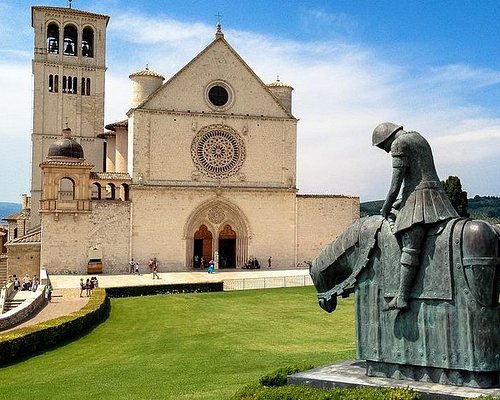
Assisi, nestled in the picturesque Umbrian hills of central Italy, holds immense historical and spiritual significance as the birthplace of St. Francis, one of the most revered figures in Christianity. The town’s charming medieval streets and buildings transport visitors back in time, offering a glimpse into its rich heritage.
At the heart of Assisi is the Basilica of St. Francis, a UNESCO World Heritage site and a major pilgrimage destination. The basilica’s stunning architecture and exquisite frescoes by renowned artists like Giotto and Cimabue depict scenes from the life of St. Francis, showcasing the blending of art and spirituality during the medieval period.
Aside from its religious importance, Assisi boasts a wealth of cultural treasures, including the Basilica of Santa Chiara, dedicated to St. Clare, a contemporary of St. Francis. The town’s ancient Roman ruins, medieval fortress (Rocca Maggiore), and quaint piazzas add to its historical charm.
Visitors to Assisi can also explore the peaceful countryside dotted with olive groves and vineyards, offering panoramic views of the Umbrian landscape. The serene atmosphere and spiritual aura of Assisi make it a haven for contemplation, reflection, and cultural exploration, inviting travelers to connect with both nature and history in this timeless Italian gem.
Basilica of St. Francis
The Basilica of St. Francis in Assisi stands as a beacon of spiritual and artistic heritage, drawing pilgrims and visitors from around the world. This magnificent basilica, dedicated to Italy’s patron saint, St. Francis of Assisi, showcases a harmonious blend of religious devotion and artistic brilliance.
The basilica is renowned for its stunning architecture, comprising two main churches: the Upper Basilica (Basilica Superiore) and the Lower Basilica (Basilica Inferiore). The Upper Basilica, adorned with exquisite frescoes by renowned artists like Giotto and Cimabue, narrates the life of St. Francis and conveys profound spiritual messages through its intricate artwork. The Lower Basilica, with its crypt housing the saint’s tomb, provides a serene space for prayer and contemplation.
Spiritual and artistic heritage
The artistic heritage of the Basilica of St. Francis extends beyond its frescoes to include sculptures, stained glass windows, and architectural details that reflect the devotion and creativity of medieval craftsmen. The basilica’s significance as a UNESCO World Heritage site further underscores its importance in preserving Italy’s cultural and religious legacy.
Visiting the Basilica of St. Francis is not only a journey into the life and teachings of St. Francis but also an immersion into the artistic achievements of the medieval period. The spiritual and artistic heritage embodied in this sacred place continues to inspire awe and reverence, making it a cherished destination for those seeking solace, enlightenment, and appreciation for Italy’s profound cultural contributions.
Siena
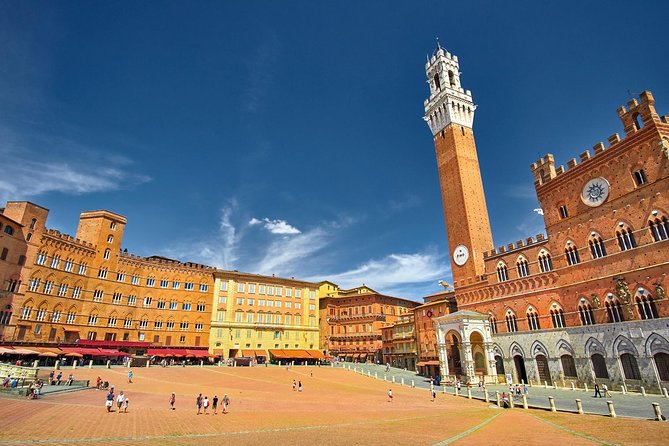
Siena, a gem of Tuscany, exudes an enchanting medieval charm and a rich cultural heritage that captivates visitors. The city’s historic center, a UNESCO World Heritage site, is a maze of narrow streets, ancient buildings, and captivating piazzas that reflect Siena’s illustrious past.
At the heart of Siena stands the magnificent Siena Cathedral (Duomo di Siena), a masterpiece of Italian Gothic architecture adorned with intricate marble facades, stunning sculptures, and breathtaking stained glass windows. The interior of the cathedral boasts masterpieces by artists like Duccio di Buoninsegna, Donatello, and Michelangelo, showcasing the city’s artistic prowess during the Renaissance period.
Siena’s iconic Piazza del Campo is a bustling square renowned for its distinctive shell shape and the Palazzo Pubblico, a majestic medieval palace housing the city’s town hall. The piazza is also the site of the famous Palio di Siena, a historic horse race dating back to the Middle Ages that symbolizes Siena’s competitive spirit and civic pride.
Exploring Siena’s historic neighborhoods reveals hidden treasures such as the Basilica of San Domenico, known for its Gothic architecture and the relics of St. Catherine of Siena, a revered medieval mystic and patron saint of Italy. The city’s museums, including the Pinacoteca Nazionale and Museo dell’Opera del Duomo, offer a deeper insight into Siena’s art, history, and cultural heritage.
With its medieval architecture, vibrant cultural scene, and timeless traditions, Siena invites visitors to step back in time and immerse themselves in the beauty and history of this captivating Italian city.
Siena Cathedral and Piazza del Campo
The Siena Cathedral (Duomo di Siena) and Piazza del Campo stand as iconic symbols of Siena’s rich cultural heritage and architectural splendor. The cathedral, a masterpiece of Italian Gothic architecture, dominates the skyline with its striking black and white marble facade and intricately designed bell tower. Inside, visitors are treated to a feast for the senses with magnificent frescoes, sculptures by renowned artists, and a stunning marble pavement that tells biblical stories in intricate detail.
Adjacent to the cathedral is the famous Piazza del Campo, one of Italy’s most beautiful and historic squares. Its unique shell shape, bordered by elegant palaces and the imposing Palazzo Pubblico (Town Hall), creates a dramatic setting that embodies Siena’s medieval charm. The piazza serves as the vibrant heart of the city, hosting cultural events, festivals, and the exhilarating Palio di Siena, a centuries-old horse race that captures the essence of Siena’s competitive spirit and civic pride.
The synergy between the Siena Cathedral and Piazza del Campo reflects the city’s deep-rooted artistic and civic traditions. The cathedral’s religious significance and architectural grandeur complement the piazza’s role as a social and cultural hub, creating a dynamic and captivating atmosphere that continues to enchant visitors from around the world. Together, they form an inseparable part of Siena’s identity and allure, inviting travelers to experience the timeless beauty and vibrant spirit of this historic Tuscan city.
Medieval charm and history
Medieval charm and history intertwine seamlessly in cities like Siena, Florence, and Assisi, offering a captivating journey into Europe’s rich heritage. The medieval period, spanning roughly from the 5th to the 15th century, was a time of great change, marked by feudalism, chivalry, religious fervor, and artistic innovation.
One of the hallmarks of medieval charm is the architecture, characterized by towering cathedrals, fortified castles, and quaint cobblestone streets lined with timber-framed houses. Cities like Siena in Italy showcase this architectural splendor, with its Gothic cathedrals, medieval palaces, and well-preserved historic districts that transport visitors back in time.
Medieval history comes alive through the stories of knights, nobles, and commoners, each contributing to the fabric of society. Castles and fortifications served as strategic strongholds, while bustling marketplaces and guilds fueled economic activity. The rise of universities, the spread of Christianity, and the flourishing of art and literature are also key elements of medieval history that shape our understanding of the era.
Exploring medieval cities allows us to immerse ourselves in the daily life, customs, and traditions of the past. From elaborate courtly rituals to the simplicity of rural life, every aspect reveals layers of complexity and intrigue. Museums, historical reenactments, and preserved artifacts further enrich our appreciation of medieval charm and history, offering insights into a world that laid the foundation for the modern age.
Naples Archaeological Museum
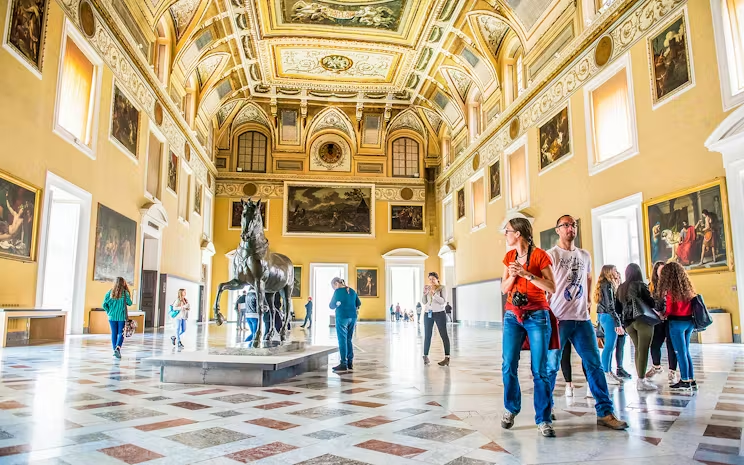
The Naples Archaeological Museum stands as a treasure trove of ancient artifacts, offering a captivating journey through the rich history of Naples and its surrounding areas. Located in the heart of Naples, Italy, this museum is renowned for its extensive collection of archaeological finds from Pompeii, Herculaneum, and other ancient Roman sites in the region.
One of the museum’s highlights is its collection of Roman and Greek sculptures, including renowned pieces such as the Farnese Hercules and the Toro Farnese. These masterpieces showcase the artistic excellence and craftsmanship of ancient civilizations, providing insights into their religious beliefs, mythological stories, and societal values.
The museum’s Pompeian Gallery is a testament to the city’s tragic yet fascinating past, displaying frescoes, mosaics, household items, and plaster casts of victims preserved by the volcanic ash from the eruption of Mount Vesuvius. Visitors can immerse themselves in the daily life, art, and architecture of Pompeii and Herculaneum through these meticulously preserved artifacts.
In addition to its Roman collections, the Naples Archaeological Museum houses treasures from ancient Egypt, including mummies, sarcophagi, and funerary objects, further enriching the museum’s diverse offerings.
Exploring the Naples Archaeological Museum is a journey through time, unraveling the mysteries of ancient civilizations and deepening our understanding of Naples’ cultural heritage. It serves as a vital link to the past, preserving and showcasing the legacy of those who once thrived in this region centuries ago.
Artifacts from Pompeii, Herculaneum, and Roman sites
The artifacts from Pompeii, Herculaneum, and other Roman sites offer a fascinating glimpse into the daily lives, customs, and artistry of ancient civilizations. Pompeii and Herculaneum, famously preserved by the eruption of Mount Vesuvius in AD 79, provide a wealth of artifacts that paint a vivid picture of Roman life during the first century.
In Pompeii, archaeological excavations have unearthed a plethora of artifacts, including frescoes, mosaics, household items, tools, and pottery. These artifacts reveal details about Pompeian homes, occupations, religious practices, and social hierarchy. The plaster casts of human victims, frozen in their final moments, evoke a haunting yet poignant reminder of the tragic event that befell the city.
Similarly, Herculaneum’s artifacts offer insights into a more affluent and refined lifestyle, with well-preserved villas, sculptures, and even carbonized wooden furniture. The town’s public baths, frescoes, and luxurious amenities reflect the daily routines and leisure activities of the Roman elite.
Beyond Pompeii and Herculaneum, artifacts from various Roman sites across Italy provide a broader perspective on ancient Roman civilization. From monumental structures like aqueducts and amphitheaters to everyday objects like coins, jewelry, and utensils, these artifacts contribute to our understanding of Roman engineering, culture, and trade networks.
Studying these artifacts allows us to reconstruct aspects of daily life, art, technology, and beliefs from antiquity. They serve as tangible links to the past, preserving the legacy of ancient civilizations and enriching our appreciation for the complexities of human history.
Historical insights into Naples and surrounding areas
Naples and its surrounding areas offer a treasure trove of historical insights that shed light on the diverse cultural, artistic, and architectural heritage of the region.
Naples itself boasts a rich history dating back to ancient times, with influences from Greek, Roman, Norman, and Spanish civilizations evident in its landmarks, traditions, and cuisine. The historic center of Naples, a UNESCO World Heritage site, is a labyrinth of narrow streets lined with churches, palaces, and centuries-old buildings that narrate the city’s evolution through the ages. Landmarks like the Castel Nuovo, Royal Palace of Naples, and San Carlo Theater provide glimpses into the city’s royal past and cultural achievements.
The archaeological treasures of nearby Pompeii and Herculaneum offer invaluable insights into Roman life, art, and architecture during the first century. The tragic eruption of Mount Vesuvius preserved these ancient cities, allowing us to explore streets, houses, public baths, and even plaster casts of victims frozen in time.
Venturing beyond Naples, the region of Campania reveals further historical riches. The Amalfi Coast, with its picturesque towns clinging to cliffs overlooking the sea, is dotted with historic villas, churches, and monasteries that speak of medieval maritime trade and cultural exchange. The ancient Greek temples of Paestum, a UNESCO site, stand as a testament to Magna Graecia’s influence in southern Italy.
The historical insights gained from Naples and its surroundings are not just about monuments and artifacts but also about the vibrant tapestry of cultures, traditions, and stories that have shaped this region over millennia. It’s a journey through time that offers a deeper understanding and appreciation of the complexities and beauty of Italy’s historical legacy.
Vatican City
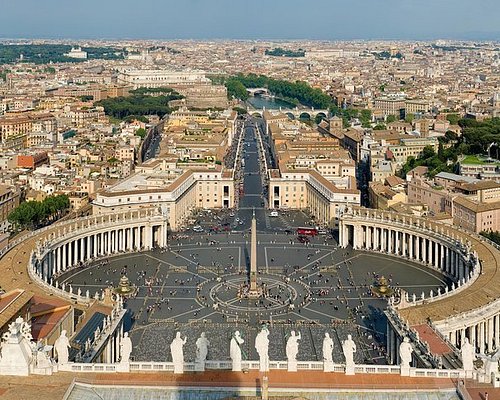
Vatican City, the smallest independent state in the world, holds immense historical, cultural, and spiritual significance as the center of the Catholic Church and the residence of the Pope. Nestled within the heart of Rome, Vatican City is a captivating destination that draws millions of visitors each year.
The Vatican Museums, a treasure trove of art and history, house an extensive collection of priceless masterpieces spanning centuries. From ancient sculptures and Egyptian artifacts to Renaissance paintings by masters like Michelangelo, Raphael, and Leonardo da Vinci, the museums offer a comprehensive journey through Western art history.
The crown jewel of Vatican City is undoubtedly the Sistine Chapel, renowned for Michelangelo’s breathtaking frescoes on its ceiling and altar wall. The Creation of Adam and The Last Judgment are among the most iconic artworks in the world, showcasing Michelangelo’s genius and the timeless beauty of Renaissance art.
Adjacent to the Sistine Chapel is St. Peter’s Basilica, the largest church in the world and a masterpiece of Renaissance and Baroque architecture. The basilica’s awe-inspiring dome, designed by Michelangelo, dominates the skyline of Rome and offers panoramic views of the city from its summit.
The Vatican’s spiritual significance extends beyond its artistic treasures, with pilgrims flocking to St. Peter’s Square to attend papal audiences and ceremonies led by the Pope. The square’s grand colonnades and the towering obelisk create a sense of majesty and reverence, reflecting the Vatican’s role as a symbol of faith and unity for Catholics worldwide.
Visiting Vatican City is a profound experience that transcends mere tourism, offering a profound connection to centuries of history, faith, and human achievement. It’s a place where art, culture, and spirituality converge, leaving a lasting impression on all who have the privilege to step foot within its sacred walls.
Vatican Museums, Sistine Chapel, and St. Peter’s Basilica
The Vatican Museums, Sistine Chapel, and St. Peter’s Basilica collectively represent a pinnacle of human creativity, spirituality, and cultural heritage within Vatican City.
The Vatican Museums are a vast complex of galleries and halls that house one of the world’s most extensive art collections. Spanning centuries and continents, the museums boast treasures ranging from ancient Egyptian artifacts and classical sculptures to Renaissance masterpieces by artists such as Raphael, Caravaggio, and Titian. Each gallery within the museums offers a journey through time and artistic expression, showcasing the evolution of human creativity and ingenuity.
At the heart of the Vatican Museums lies the Sistine Chapel, a sacred space adorned with Michelangelo’s awe-inspiring frescoes. The ceiling of the chapel features The Creation of Adam and other scenes from the Book of Genesis, while The Last Judgment adorns the altar wall. Michelangelo’s mastery of composition, anatomy, and emotion is on full display in these monumental works, making the Sistine Chapel a testament to the heights of Renaissance artistry.
Adjacent to the Vatican Museums is St. Peter’s Basilica, a monumental symbol of Christianity and a masterpiece of Renaissance and Baroque architecture. Designed by Bramante, Michelangelo, and other renowned architects, the basilica’s grandeur is unmatched, with its massive dome, ornate facades, and stunning interior adorned with marble, mosaics, and sculptures. The basilica houses numerous artistic treasures, including Michelangelo’s Pietà and Bernini’s Baldacchino.
Together, the Vatican Museums, Sistine Chapel, and St. Peter’s Basilica offer a profound and enriching experience for visitors, blending art, history, spirituality, and architectural magnificence. They stand as a testament to human creativity, faith, and cultural heritage, inspiring awe and reverence in all who have the privilege to explore these iconic landmarks.
Religious and artistic treasures
The Vatican City is a treasure trove of religious and artistic riches, drawing visitors from around the globe to marvel at its sacred and cultural heritage.
At the heart of these treasures is St. Peter’s Basilica, a monumental masterpiece of Renaissance and Baroque architecture. The basilica houses an array of religious relics and artifacts, including the revered statue of St. Peter and the stunning Baldacchino by Gian Lorenzo Bernini. The basilica’s interior is adorned with magnificent works of art, such as Michelangelo’s Pietà and the grand dome that offers a celestial view of the heavens.
Adjacent to St. Peter’s Basilica lies the Vatican Museums, home to an extensive collection of religious art spanning centuries. From ancient sculptures and mosaics to Renaissance paintings and Baroque masterpieces, the museums showcase the evolution of religious imagery and devotion. Highlights include Raphael’s Stanze di Raffaello, the Gallery of Maps, and the mesmerizing Sistine Chapel, adorned with Michelangelo’s iconic frescoes depicting scenes from Genesis and the Last Judgment.
The Vatican’s religious and artistic treasures extend beyond its museums and basilica to encompass the Vatican Gardens, Apostolic Palace, and Apostolic Library, each preserving a rich tapestry of faith, history, and creativity.
Visiting the Vatican is not just a journey through art and history but also a profound spiritual experience, connecting visitors to centuries of religious devotion and cultural expression. The religious and artistic treasures of the Vatican City serve as a testament to the enduring power of faith, beauty, and human creativity.
Conclusion Historical Tours in Italy
Embarking on historical tours in Italy is an enriching and transformative experience that unveils the country’s profound cultural legacy and artistic brilliance. From the ancient marvels of Rome to the Renaissance treasures of Florence, the medieval charm of Siena, and the spiritual aura of Assisi, each destination offers unique insights into Italy’s rich history and heritage.
Exploring Pompeii and Herculaneum provides a poignant reminder of the fragility of human civilization and the enduring impact of natural forces. Meanwhile, Venice’s grandeur and unique waterways, Naples’ archaeological wonders, and the Vatican City’s religious and artistic treasures add further layers to Italy’s historical tapestry.
Through historical tours, travelers not only witness iconic landmarks and artifacts but also immerse themselves in the stories, traditions, and cultural nuances that have shaped Italy over millennia. It’s a journey that transcends time, connecting us to the ingenuity, creativity, and resilience of past civilizations while leaving a lasting imprint on our understanding and appreciation of Italy’s enduring contributions to the world.

